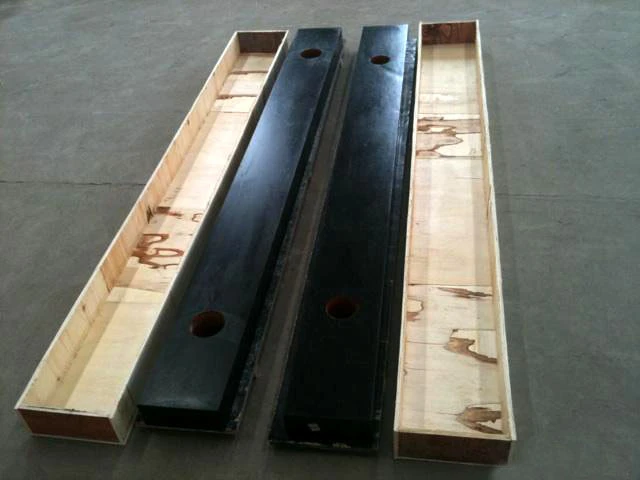dec . 05, 2024 19:07 Back to list
Effective Solutions for Reducing Mechanical Vibrations with Damping Pads
Understanding Mechanical Vibration Damping Pads An Overview
Mechanical vibration is an inherent characteristic of various machines and structures, often leading to unwanted noise, premature wear, and diminished operational efficiency. As industries evolve and machinery becomes more advanced, the need for effective solutions to manage these vibrations has become increasingly paramount. One of the primary tools for addressing this issue is the use of mechanical vibration damping pads.
What Are Damping Pads?
Damping pads, also known as vibration isolation pads, are specially designed materials placed between vibrating machinery and the surfaces they operate on. Their primary function is to absorb or dampen the energy generated by vibrations, reducing the transmission of these vibrations to surrounding structures. These pads can be made from various materials, including rubber, foam, and specialized composites, each serving different applications based on the required properties like flexibility, density, and resistance to wear.
How Do Damping Pads Work?
The principle behind damping pads revolves around energy absorption. When machinery vibrates, it generates kinetic energy. Damping pads work by converting this kinetic energy into negligible forms of energy, primarily through viscoelastic properties. For example, when the machinery vibrates, the damping pad squishes and expands, dissipating energy in the process. The result is a significant reduction in the amplitude of vibrations transmitted to the supporting surfaces or buildings.
Benefits of Using Damping Pads
1. Noise Reduction One of the primary advantages of damping pads is their ability to absorb sound waves generated by vibrating machinery. By minimizing the vibration, these pads also drastically reduce noise pollution, contributing to a quieter and more pleasant working environment.
2. Equipment Longevity Prolonged exposure to vibrations can lead to wear and tear on machinery components. Damping pads help minimize this exposure, consequently extending the life of machinery and reducing maintenance costs.
3. Operational Efficiency When machinery operates with less vibration, it can function more effectively and reliably. This enhanced operational stability can lead to improved output quality and reduced downtime.
4. Safety Excessive vibrations can lead to safety hazards, including potential machinery failures. Damping pads serve as a protective barrier, reducing the chances of accidents caused by equipment malfunctions.
Applications of Vibration Damping Pads
mechanical vibration damping pads

Damping pads find applications across numerous industries, including
- Manufacturing In factories, machines such as compressors, pumps, and CNC machines often vibrate. Damping pads help maintain a stable operational environment, enhancing product quality. - HVAC Systems Heating, ventilation, and air conditioning systems frequently produce vibrations. Utilizing damping pads can significantly reduce noise and enhance comfort in residential and commercial spaces.
- Automotive Industry Vehicles experience various sources of vibrations – from engine movements to road unevenness. Damping pads can be used to minimize unwanted vibrations inside the cabin, improving passenger comfort.
- Construction Heavy machinery and equipment used at construction sites produce significant vibrations. The use of damping pads can help protect sensitive structures in proximity from vibration damage.
Choosing the Right Damping Pad
Selecting the appropriate damping pad involves considering several factors, including
- Material composition Depending on the type of machinery and the nature of vibrations, different materials (rubber, cork, or foam) may be more suitable.
- Load capacity It’s crucial to choose pads that can support the weight of the equipment without compromising performance.
- Frequency range The frequency of vibrations must be analyzed to select damping pads that provide optimal isolation over the required spectrum.
- Environmental conditions Factors such as temperature, exposure to chemicals, and outdoor conditions can influence the longevity and performance of damping pads.
Conclusion
In an era where machinery and equipment are central to industrial operations, the role of mechanical vibration damping pads cannot be overstated. They not only enhance operational efficiency and safety but also contribute to a quieter and more sustainable working environment. As we continue to innovate and improve our machinery, ensuring optimal vibration management will be key to success across myriad industries. Understanding the utility, benefits, and applications of damping pads is essential for any industry professional looking to enhance their operations and equipment lifespan.
-
thread-plug-gauge-our-promise-of-measurement-excellenceNewsAug.22,2025
-
gauge-pin-class-reflecting-quality-legacyNewsAug.22,2025
-
check-valve-types-for-high-rise-buildingsNewsAug.22,2025
-
water-control-valve-for-irrigation-systemsNewsAug.22,2025
-
gate-valve-with-soft-seal-technologyNewsAug.22,2025
-
y-type-strainer-for-oil-and-gas-applicationsNewsAug.22,2025
Related PRODUCTS









